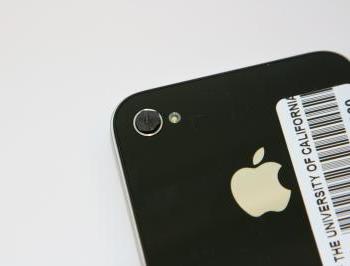A team of researchers from the University of California have tweaked the technology offered in the iPhone to turn them into handy medical-quality imaging and chemical detection aids.
 This is an iPhone microscope. It consists of a 1-millimeter-diameter ball lens embedded in a rubber sheet and taped over the smartphone's camera. Credit: Z. J. Smith, K. Chu, A. R. Espenson, M. Rahimzadeh, A. Gryshuk, M. Molinaro, D. M. Dwyre, S. Lane, D. Matthews, S. Wachsmann-Hogiu.
This is an iPhone microscope. It consists of a 1-millimeter-diameter ball lens embedded in a rubber sheet and taped over the smartphone's camera. Credit: Z. J. Smith, K. Chu, A. R. Espenson, M. Rahimzadeh, A. Gryshuk, M. Molinaro, D. M. Dwyre, S. Lane, D. Matthews, S. Wachsmann-Hogiu.
These modified iPhones can help doctors, nurses and field technicians to capture and send images to specialists who analyze and send their feedback in real-time.
The technology tweak involves using the 5X megapixel camera on the iPhone combined with a fine glass sphere, which acts like a magnifying glass. The team used a 1-mm-dm ball lens in their prototype device. The Smartphone camera when combined with this lens can distinguish features in the order of 1.5 µ, which is clear enough to identify various blood cell types.
The ball lenses produce low magnification and excel in gathering light that is vital for high resolution. Subsequently, the iPhone camera’s semiconductor sensors comprise many millions of light capturing cells. The length of each cell is only 1.7 µ that is enough to capture high-resolution image that is filtered through the ball lens. The ball lens curved surface distorts the image as light passes through apart from a small spot in the middle. Using a digital image processing software, this distortion is corrected and the same software is used to link together images into a single image ideal for analysis.